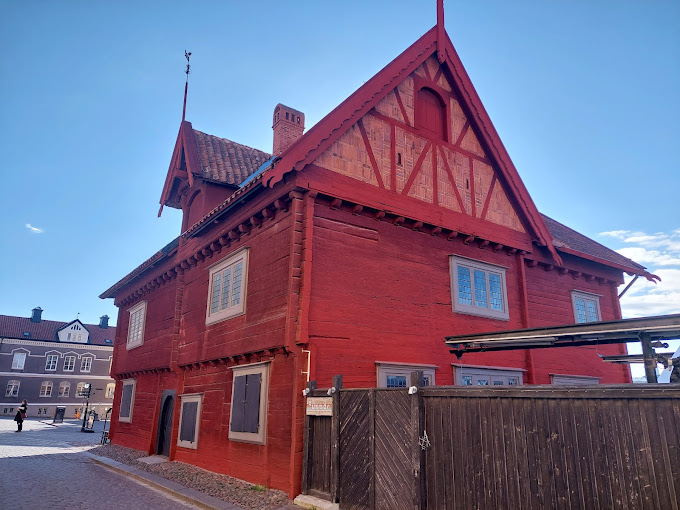Visby City Wall, Swedan
🏰 Visby City Wall, Sweden – A Medieval Marvel by the Baltic
📍Location: Visby, Gotland Island, Sweden
🕰 Built: Late 13th Century
🌍 UNESCO World Heritage Site: Yes (since 1995)
🧭 Highlights & Travel Info:
-
Length: 3.44 kilometers (approx. 2.1 miles)
-
Towers: Originally 29; 27 still stand today
-
Main Gates: Norderport (North), Österport (East), Söderport (South)
-
Best Access Point: Start your walk near the Norderport for a full experience along the north wall.
🏞️ What to Do:
-
Walk Along the Wall: Some sections are accessible, offering fantastic views of Visby and the Baltic Sea.
-
Explore the Towers: Climb select towers for panoramic photography.
-
Join a Guided Tour: Local guides often dress in medieval attire and share fascinating legends.
-
Visit in Summer: During Medieval Week (usually early August), the wall comes alive with reenactments, jousting, and markets.
🍽️ Nearby Local Eats:
-
Bakfickan: A cozy spot known for fresh seafood.
-
Creperie & Logi: Rustic crepes in a garden setting.
-
Ett Rum För Resande: Local and seasonal ingredients, with historic ambiance.
🏨 Where to Stay:
-
Hotel St. Clemens – Set right next to the city wall.
-
Clarion Hotel Wisby – Central, charming, and spa-equipped.
-
Donners Hotel – Historic vibe with modern comfort.
💡 Tips for Visitors:
-
Time your visit: Sunset offers stunning golden light on the wall stones.
-
Wear comfortable shoes: Cobblestones and uneven paths are common.
-
Learn the history beforehand or get a guided audio tour.
🏰 Deeper Historical Context
The Visby City Wall (Swedish: Ringmuren i Visby) was constructed primarily between 1270 and 1288, during a time when Visby was a major trading hub of the Hanseatic League—a powerful alliance of merchant guilds in Northern Europe.
Originally built to protect the wealthy merchant city from pirates and rival nobles, the wall is one of the best-preserved medieval defensive structures in all of Europe. The conflict between rural farmers and city merchants even led to a civil war on Gotland in 1288, during which parts of the wall were hastily completed.
🧱 Architectural Features
-
Material: The wall is made of limestone, sourced locally from Gotland.
-
Design: It includes arrow slits, machicolations, and gates with murder holes—classic features of medieval fortifications.
-
Watchtowers: Some are square, while others are round, showing architectural evolution.
-
Snäckgärdsporten (Snail Garden Gate): A lesser-known section once used for livestock and hidden exits.
🌐 Cultural & World Heritage Significance
-
Visby and its wall were added to the UNESCO World Heritage List in 1995 due to their "exceptional preservation" and importance as a representation of Hanseatic culture.
-
The wall is often used as a symbol of Gotland, appearing in art, postcards, and official branding.
🎭 Festivals & Events
-
Medieval Week (Medeltidsveckan): Held annually in early August, it's one of Sweden’s most famous cultural festivals. The city transforms into a medieval town with:
-
Costumed parades
-
Mock battles and swordplay
-
Craft markets and mead tastings
-
Historical plays and storytelling events
-
📸 Photo-Worthy Spots on the Wall
-
Kajsarn Tower: The largest and most iconic tower.
-
Love Gate (Kärleksporten): A romantic arch offering sea views.
-
East Wall (Östermur): Quiet and atmospheric with overgrown nature.
🌦️ Best Times to Visit
-
May–September: Warmer weather and longer daylight.
-
August: For the full Medieval Week immersion.
-
Winter: The wall is hauntingly beautiful in snow but less accessible and few tours run.
🧠 Fun Facts
-
The wall inspired parts of Astrid Lindgren’s Pippi Longstocking adventures—she was born in Sweden and visited Gotland often.
-
Visby is often called the "City of Roses and Ruins", with the wall weaving around ancient church ruins and rose gardens.
-
The wall is so iconic in Sweden that it has been featured on Swedish postage stamps.


